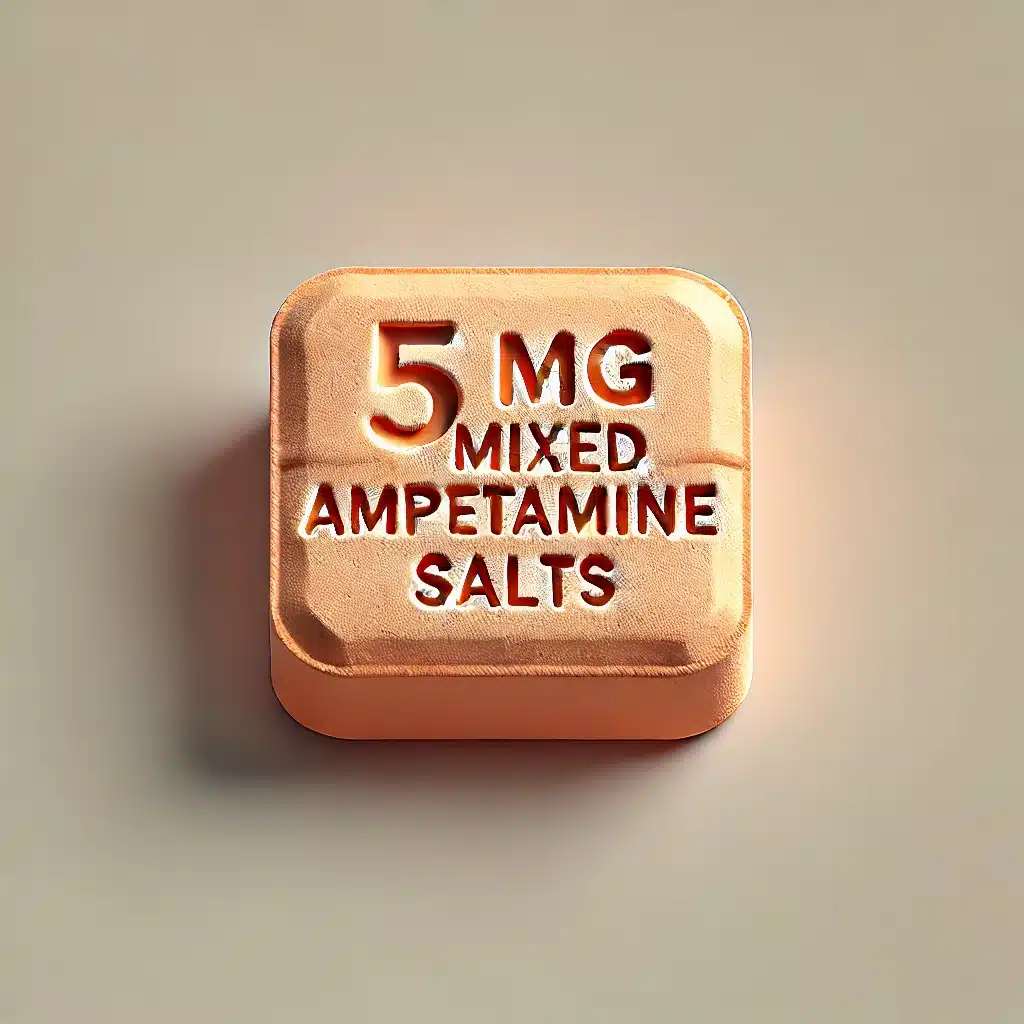TLDR: A patient developed a compulsive chewing behavior when taking mixed amphetamine salts (MAS) for ADHD, highlighting the need to monitor for unusual side effects with stimulant use.
Highlights:
- Patient Background: The patient is a 32-year-old woman with a history of GERD, gastroparesis, migraines, PTSD, generalized anxiety disorder, ADHD, and unspecified bipolar disorder.
- Medication & Side Effect: She started MAS immediate-release (IR) for ADHD and developed a compulsion to chew, finding relief with a child’s teething necklace.
- Dosage Adjustment: Reducing the MAS IR dose to 2.5mg daily improved symptoms, and she later tolerated 5mg daily after persistent use.
- First Reported Case: This is the first known human case of compulsive chewing linked to MAS, a behavior previously seen in animal studies with amphetamines.
- Clinical Implications: The case underscores the importance of monitoring for unusual side effects, such as compulsive behaviors, when prescribing stimulants for ADHD, especially in patients with complex psychiatric histories.
Source: Innovations in Clinical Neuroscience (2024)
Patient History: 32-Year-Old with Psychiatric Conditions on Mixed Amphetamine Salts (2024)
Age: 32 years old
Gender: Female
Medical History: Gastroesophageal Reflux Disease (GERD), Gastroparesis, Migraines
Psychiatric History:
- Post-Traumatic Stress Disorder (PTSD)
- Generalized Anxiety Disorder
- ADHD (Inattentive Type)
- Unspecified Bipolar Disorder (Noted history of mood episodes with agitation, rage, and impulsive decisions, Amplified symptoms with antidepressant use, Family history of bipolar disorder)
Prior Medications:
- MAS Extended-Release (XR) 10mg daily (for ADHD)
- Buspirone 7.5mg twice daily as needed (for anxiety)
- Lorazepam 0.5mg as needed (for anxiety)
Current Medications:
- Lamotrigine 25mg twice daily (for mood stabilization)
- MAS Immediate-Release (IR) 2.5mg, titrated to 5mg daily (for ADHD)
Case Details: Chewing & Biting Compulsion from Amphetamine Salts (2024)

The case involved a 32-year-old female patient with a complex medical and psychiatric history, presenting for an initial psychiatric assessment due to concerns about irritability.
Her past medical history included gastroesophageal reflux disease (GERD), gastroparesis, and migraines.
She was previously treated by her primary care physician for PTSD, generalized anxiety disorder, depression, and ADHD.
Diagnosis & Initial Treatment
Upon psychiatric evaluation, the patient was diagnosed with:
- Post-Traumatic Stress Disorder (PTSD)
- Generalized Anxiety Disorder (GAD)
- ADHD, inattentive type
- Unspecified Bipolar Disorder
To stabilize her mood, Lamotrigine was prescribed and titrated to 25mg twice daily, which led to significant mood stability.
ADHD Management with Amphetamine Salts
For ADHD management, Mixed Amphetamine Salts (MAS) Immediate-Release (IR) was initiated at a low dose of 2.5mg daily to monitor any potential mood destabilization.
The dosage was then titrated to 5mg daily.
Emergence of Compulsive Chewing Behavior
After increasing the MAS IR dose to 5mg daily, the patient experienced an uncontrollable urge to chew approximately 1 to 2 hours post-medication intake.
This urge persisted for around 1 to 2 hours. Traditional methods to alleviate the urge, such as chewing gum, were ineffective.
However, using a hard child’s teething necklace provided significant relief and satisfaction, as well as a reduction in associated anxiety.
The patient did not report any jaw tightness or teeth grinding.
Management & Treatment of Compulsive Chewing
In response to the compulsive chewing behavior, the MAS IR dosage was reduced back to 2.5mg daily, which resulted in an improvement of symptoms.
To further understand the cause-effect relationship, the dose was later increased again to 5mg daily.
This re-titration resulted in a recurrence of the chewing urge, but the patient decided to continue the medication at the same dose consistently each morning.
After one week of consistent use at 5mg daily, the side effect diminished, and the patient no longer experienced the compulsive urge to chew.
This attenuation over time suggests that the patient might have reached a steady-state concentration of MAS IR, resulting in less fluctuation in plasma levels and subsequently fewer side effects.
Amphetamine Pharmacokinetics vs. Chewing Behavior
The patient’s previous tolerance of a higher dose of MAS XR (10mg daily) contrasts with the emergence of side effects at a lower MAS IR dose (5mg daily).
This implies that while she tolerated a higher overall plasma concentration, the rapid increase associated with IR formulation triggered the compulsive behavior.
The MAS IR formulation reaches peak plasma concentration in approximately three hours, which aligns with the timing of the urge onset.
The half-life of mixed amphetamine salts (MAS) is between 9.77 to 13.8 hours, and the side effects subsided as the medication was metabolized and eliminated.
The resolution of the side effect after consistent use suggests that achieving steady-state concentrations might help mitigate such adverse effects.
Clinical Implications
This case is significant as it is the first known instance of compulsive chewing or biting movements linked to mixed amphetamine salts use in humans, despite similar behaviors observed in animal models.
It underscores the necessity for clinicians to vigilantly monitor for unusual side effects, such as compulsive behaviors, when prescribing stimulants for ADHD, especially in patients with complex psychiatric conditions.
Adjusting dosages and being aware of potential adverse effects can help in managing these side effects effectively.
Compulsive Biting/Chewing from Amphetamine Salts (Prevalence & Possible Causes)

Prevalence
The reaction of developing a compulsive chewing behavior in response to mixed amphetamine salts (MAS) is exceptionally rare.
There are no previously reported cases in humans specifically associated with MAS, making this a unique and noteworthy case.
While stimulant-induced repetitive and compulsive behaviors are documented in the literature, their occurrence is not common and often varies depending on the specific stimulant used and the population studied.
Potential Causes
Mechanism of Action
Dopamine Release: MAS works by increasing the release of dopamine in various central nervous system (CNS) regions, including the striatum, which is associated with motor control and behavioral reinforcement.
Striatal Stimulation: Excessive stimulation of the striatum by amphetamines has been linked to repetitive and compulsive behaviors in animal models.
Neurobiological Factors
Individual Susceptibility: Some individuals may have a heightened sensitivity to the dopaminergic effects of stimulants, predisposing them to develop stereotypical behaviors.
Genetic Predisposition: Genetic factors might play a role in how different patients metabolize and respond to amphetamines, contributing to the variability in side effect profiles.
Pharmacokinetics
Immediate-Release Formulation: The IR formulation of MAS leads to a rapid increase in plasma concentration, which might trigger acute side effects like compulsive chewing, as observed in this case.
Dose-Related Effects: Higher doses or rapid titration can increase the likelihood of side effects, emphasizing the need for careful dose management.
Psychiatric Comorbidities
Psychiatric Conditions: The presence of other psychiatric conditions, such as PTSD, generalized anxiety disorder, and bipolar disorder, may interact with the pharmacodynamics of MAS, leading to atypical reactions.
Prior Research & Observations
Animal Studies: Research on rodents has shown that amphetamines can induce stereotyped biting behaviors, suggesting a possible parallel in humans under certain conditions.
Human Reports: While there are documented cases of stimulant-induced obsessive-compulsive behaviors and movement disorders, specific reports of compulsive chewing in response to amphetamine salts are absent, indicating this as a novel finding.
Conclusion: Compulsive Chewing from Amphetamine Salts
References
- Study: Compulsive Biting and Chewing with Mixed Amphetamine Salts: A Case Report (2024)
- Authors: Melissa Free et al.







